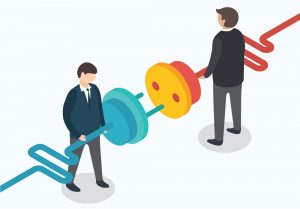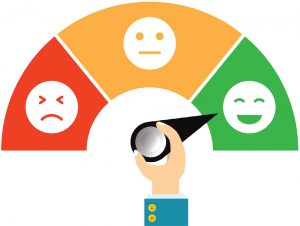The Science of Reviving and Thriving
Cover Story – by Todd Zaugg
The demands of today’s healthcare sales and workplace environment are real and intense.
Do you ever wonder why some sales professionals consistently thrive, while others have intermittent or substandard performance? Do you ever feel that you, your coworkers or others in the sales force are overwhelmed and frazzled to a point it is negatively impacting engagement and performance?
The demands of today’s healthcare sales and workplace environment are real and intense. It can be a challenge to stay focused and fueled in ways that help you thrive. The positive or negative ripple effect can impact the internal and external personnel that sales people interface with, as well as potentially affecting patients.
 Zimmer Biomet Canada recognized these challenges and sought to proactively provide solutions for focusing, recharging and invigorating their sales organization and last year launched a new program with Matrix Achievement Group.
Zimmer Biomet Canada recognized these challenges and sought to proactively provide solutions for focusing, recharging and invigorating their sales organization and last year launched a new program with Matrix Achievement Group.
“If sales people can’t be their best selves, then the chances are that they will not be able to provide the motivation to go the extra mile required for key activities that drive customer relationships, converting new accounts, negotiations and the team work required to be effective in orthopedic sales,” said Meghan Forsey, national educator and business operations associate for Zimmer Biomet Canada.
“We were also blown away by the statistics related to the current state of employees in the business world today and decided those disease states were not acceptable for our environment,” she added. “And, if left unattended, are we inadvertently opening a door so that could slowly leak into any organizational culture? We asked ourselves, what is the negative impact on organizational performance when the individual is not invigorated to take on the key activities or goals that drive success? What are the real costs associated with ‘average’ or mediocre attitudes?”
The work cited research from more than 43 sources, indicating impacts related to developing happier people.
Zimmer Biomet also considered some of following powerful work place insights and statistics related to less than engaged personnel:
- 70 percent of U.S. workers are disengaged and not reaching full potential.
- Higher customer complaints.
- More sick days.
- Poor sales results.
- Late deadlines.
- Higher turnover rates.
- Undermining performance of others.
- No extra effort is given.
- 50 percent state that stress is high to overwhelming.
- Costs employers $500 billion collectively every year.
- $360 billion a year in healthcare costs.
Asking themselves what could be done to thwart this from happening in a productive environment, Zimmer Biomet and Matrix worked together to navigate the latest research on moving humans from their current state to a more energized state.
“We were looking for something that helped us focus on the individual connecting themselves personally to the company’s mission, their specific personal and business goals as well as the day-to-day activities that drive results,” Forsey said. “We learned that positive thinking has moved from the moniker of being ‘new age’ to being the ‘new normal.’ “
 For instance, the research from Shawn Achor, bestselling author of The Happiness Advantage, shows the reality of being mindful of positive thinking:
For instance, the research from Shawn Achor, bestselling author of The Happiness Advantage, shows the reality of being mindful of positive thinking:
- Doctors put in a positive mood before making a diagnosis show almost 3 times more intelligence and creativity than doctors in a neutral state, and they make accurate diagnosis 19 percent faster.
- Optimistic salespeople outsell their pessimistic counterparts by 56 percent.
- Students primed to feel happy before taking math achievement tests far outperform their neutral peers.
- In turns out that our brains are literally hardwired to perform at their best not when they are negative or even neutral, but when they are positive.
The work cited research from more than 43 sources, including statistical insights from Dr. Sonja Lyubomirsky, unequivocally indicating the following impacts to developing happier people:
- More money.
- Better leaders.
- More fulfilling marriages.
- More friends.
- More philanthropic.
- Cope better with stress and trauma.
- Healthier, stronger immune systems.
- Live longer.
- Perform better at work.
“Specifically, we launched a program designed to help learners recharge themselves by experiencing a journey of personal insights and growth,” Forsey said. “This included discussions and workshops that helped them define true success, uncover the truth and reality behind human happiness, narrate the story of their lives, discover their personal values, identify their talent strengths, unveil proven mechanisms of positivity, understand emerging unseen health risks and finally build that out into an actionable architecture related to their daily activities and annual goals. The last point was critical to us because we wanted this to be more sustainable than a motivational event.”
 How did it go? Participant feedback showed how hungry individuals are to find the
How did it go? Participant feedback showed how hungry individuals are to find the
intersection between personal meaning and work.
After a four-month, post-program review, Zimmer Biomet was greatly encouraged to see that employees were putting the skills in practice and using the knowledge to improve their interactions and mindset. Those who already believed in the impact of positive thoughts and happiness now had the science to prove it and started passing the message on. For example, one of the company leaders with 42 direct reports, bought copies of The Happiness Advantage for his team and messaged how powerful and important this book was for his personal performance and how it could improve theirs.
Those who already believed in the impact of positive thoughts and happiness now had the science to prove it and started passing the message on.
“What we found most surprising was that the group that seemed to benefit the most were our self-described skeptics,” Forsey said. “One of these skeptics is an analytical-minded and vocal sales manager who thought the program would be a waste of time and was sharing that opinion with others! He was surprised with the amount of data that exists supporting how a positive mindset can directly impact performance. By making a shift in his thought process, his team did as well. It quickly became clear that the trickle-down effect was real.”
Another self-described skeptic, James, had a powerful experience. He has an analytical mind and was surprised by the science that was presented and was inspired enough to try something different – even if it was to prove it wrong. He began a structured process of daily gratefulness that ultimately impacted his attitude and the relationships around him.
James decided to share his experience with a nurse who has a similarly pessimistic attitude. He explained his process and described how he felt happier after just two weeks and suggested that she try it. It became a running topic of conversation and when they saw each other in a bad mood, they would ask each other: What are you grateful for today?
“The true vehicle is the sales person. And their vehicles need high performance gasoline.”
— Meghan Forsey, Zimmer Biomet Canada
“The program achieved our objectives,” Forsey said. “It facilitated the individual to connect themselves personally to the company’s mission, their specific personal and business goals, as well as the day-to-day activities that drive results. It energized our people and created new dimensions of team interactions and customer interactions, as well as having a powerful impact in people’s personal lives.
 The term ‘sales enablement’ is just that, an enabler, not the main vehicle that drives success.
The term ‘sales enablement’ is just that, an enabler, not the main vehicle that drives success.
“We are living in a technology-focused world, one in which some people use technology as a crutch for reducing personal interactions or view it as a panacea for delivering value propositions, so it is easy for sales people and organizations to fall into the trap of thinking that technology is the ultimate sales lever,” Forsey added. “Technology has its place, but it cannot replace the power of a motivated and fully engaged contact point for customer-facing service.”
 It is fair to remember that the term “sales enablement” is just that, an enabler, not the main vehicle that drives success.
It is fair to remember that the term “sales enablement” is just that, an enabler, not the main vehicle that drives success.
“The true vehicle is the sales person,” Forsey said. “And their vehicles need high performance gasoline. They are on the front line of revenue generation. Truly, nothing else in the organization matters but that our sales people having a meaningful interaction with prospects and customers. They epitomize the statement that “YOU are the product” and we need to support them in helping them recharge, energize and revive the fire that allows them to thrive.”
Todd Zaugg is founder and CEO of Matrix Achievement Group. Email Todd at
todd@matrixachievement.com.
Come On, Get Happy
Shawn Achor, author of The Happiness Advantage, will be the opening keynote speaker at the 48th LTEN Annual Conference, June 3-6, 2019. For more information or to register, visit www.LTENconference.com.











